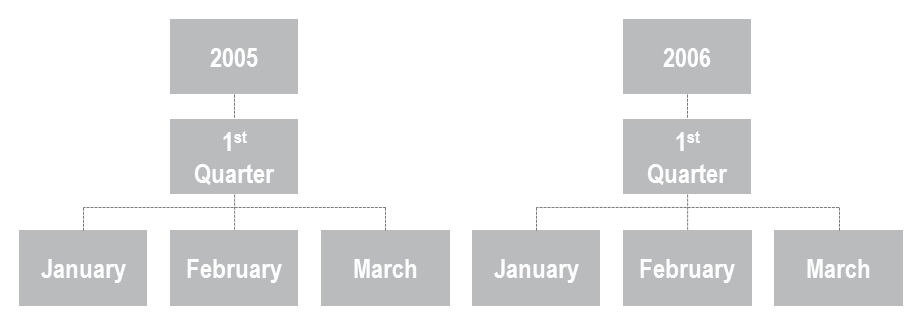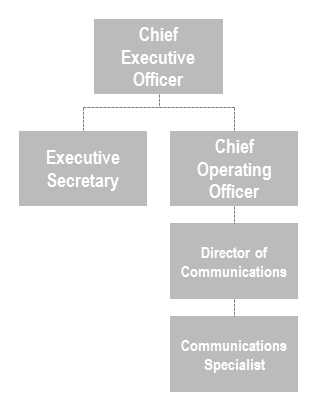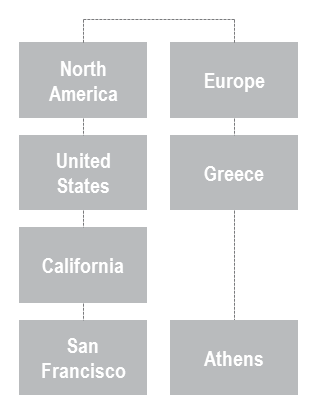Database Classification Hierarchies
A number of hierarchy types are logically possible in classifications. These include balanced, unbalanced, and ragged hierarchies, as shown in the examples below.
Whatever the logical structure for a hierarchy, SuperSTAR requires that the physical structure is balanced. This means that for other structures, the "missing" levels must be filled in by repetition of the value from the next lower field.
Balanced Hierarchies
In balanced/standard hierarchies, the branches of the hierarchy all descend to the same level, with each member's parent being at the level immediately above the member. A common example of a balanced hierarchy is one that represents time, where the depth of each level (year, quarter, and month) is consistent:

Unbalanced Hierarchies
Unbalanced hierarchies include levels that have a consistent parent-child relationship, but have logically inconsistent levels. The hierarchy branches can also have inconsistent depths.
An example of an unbalanced hierarchy is an organisation chart showing reporting relationships among employees in an organisation. Some branches in the hierarchy have more levels than others:

Ragged Hierarchies
In ragged hierarchies, the parent member of at least one member of a dimension is not in the level immediately above the member. Like unbalanced hierarchies, the branches of the hierarchies can descend to different levels.

